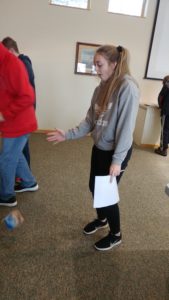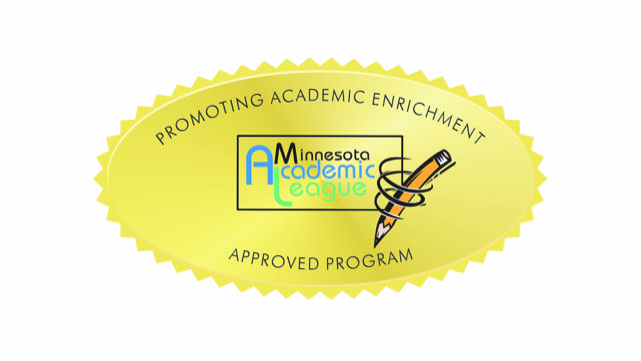On Wednesday, March 21st, 2018, 17 students and their coaches from New London Spicer High School, Atwater-Cosmos-Grove City High School, and DREAM Technical Academy YES! teams came together to learn about what a prairie is, why they are beneficial to the environment, how prairies and climate change connect, and different renewable energy sources at Prairie Woods Environmental Learning Center.
 Scott Glup, project leader for the U.S. Fish and Wildlife Service, began the morning teaching students all about native prairies. Students responded to his question about why prairies matter with comments like “it is part of our history” and “it is habitat for our animals”. He explained that there is less than one percent of Minnesota’s original prairie remaining, primarily because of agriculture. He also touched on how two or three hundred years ago, there were about 87 wetlands per square mile in the prairie pothole region that Spicer is in. Since then, we have lost 90 to 95% of those wetlands. He finished with emphasizing that the “prairie that we have left is special and rare.” Students then got to take a hike to a rare location at PWELC that is native prairie grass that has been restored.
Scott Glup, project leader for the U.S. Fish and Wildlife Service, began the morning teaching students all about native prairies. Students responded to his question about why prairies matter with comments like “it is part of our history” and “it is habitat for our animals”. He explained that there is less than one percent of Minnesota’s original prairie remaining, primarily because of agriculture. He also touched on how two or three hundred years ago, there were about 87 wetlands per square mile in the prairie pothole region that Spicer is in. Since then, we have lost 90 to 95% of those wetlands. He finished with emphasizing that the “prairie that we have left is special and rare.” Students then got to take a hike to a rare location at PWELC that is native prairie grass that has been restored.
 Following that, students heard from Jenna Totz, Education Manager with Climate Generation: A Will Steger Legacy, about what climate change is and how prairies help reduce the impact of climate change. Students learned where carbon was historically stored on earth and how that has changed since the industrial revolution with the help of an interactive game. They also heard statistic like how 97% of climate change scientist believe that climate change is happening; as well as how Minnesota has over 40 more mosquito days in the summer than we used to! Then students heard how prairies sequester lots of carbon from the atmosphere, but with the landscape change since the industrial revolution, this is no longer happening.
Following that, students heard from Jenna Totz, Education Manager with Climate Generation: A Will Steger Legacy, about what climate change is and how prairies help reduce the impact of climate change. Students learned where carbon was historically stored on earth and how that has changed since the industrial revolution with the help of an interactive game. They also heard statistic like how 97% of climate change scientist believe that climate change is happening; as well as how Minnesota has over 40 more mosquito days in the summer than we used to! Then students heard how prairies sequester lots of carbon from the atmosphere, but with the landscape change since the industrial revolution, this is no longer happening.
The day was finished up touring Prairie Woods Environmental Learning Center’s renewable energy sources. Students “led” the tour by finding different ways PWELC reduces its energy consumption (insulating shades, having lights turned off, sky lights, etc.) and producing its own energy (wind turbine, solar panels, biomass boiler, pellet stoves, etc.). The YES! Program is excited to see what the students complete throughout their YES! careers!
